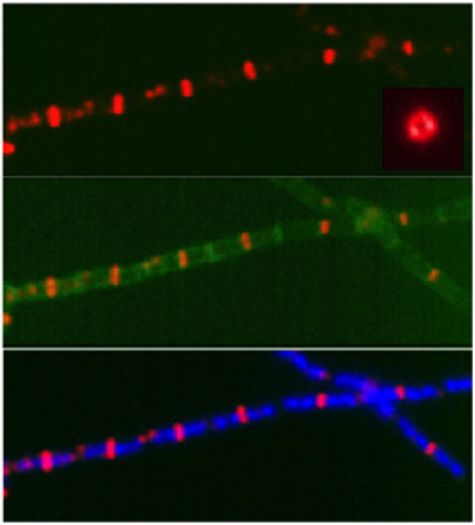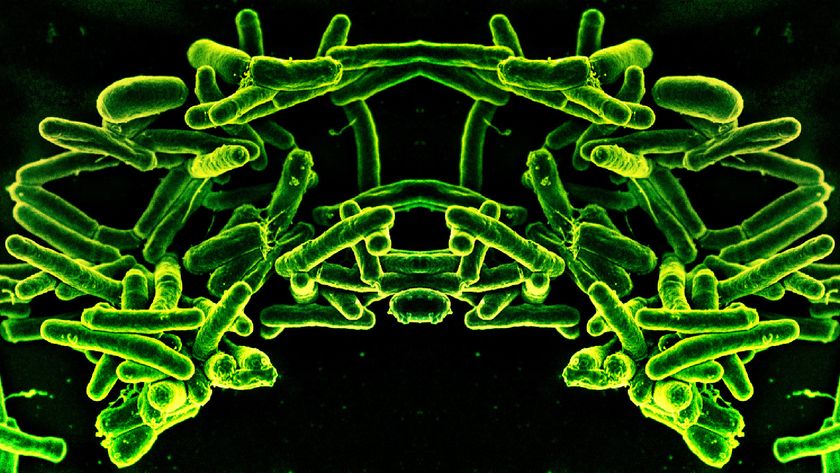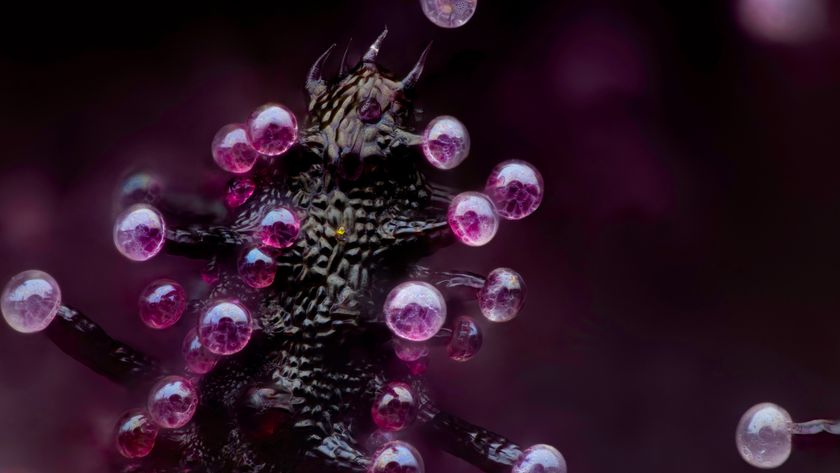
This image may look like faraway lights, but it's actually a close-up view of cell division. Scientists at Washington University in St. Louis have worked out how Escherichia coli delays cell division when food is abundant so it can bulk up before reproducing. E. coli reproduces in a process called binary fission in which each cell grows and then divides in the middle to produce two daughter cells. The result of waiting to divide: heftier daughter cells.
In the top image, constriction rings, which cause cells to pinch in two appear in red (shown head-on in the inset). In the middle, an image of the constriction rings has been overlaid on one of the cell walls (green). The bottom image shows the constriction rings and the bacterial DNA (blue).
Working out the control system for the delay in cell division allows scientists to study how to stop such division and even develop a new class of antibiotics to prevent division entirely, thus, killing the bacteria.
Follow LiveScience @livescience, Facebook & Google+.
Sign up for the Live Science daily newsletter now
Get the world’s most fascinating discoveries delivered straight to your inbox.












